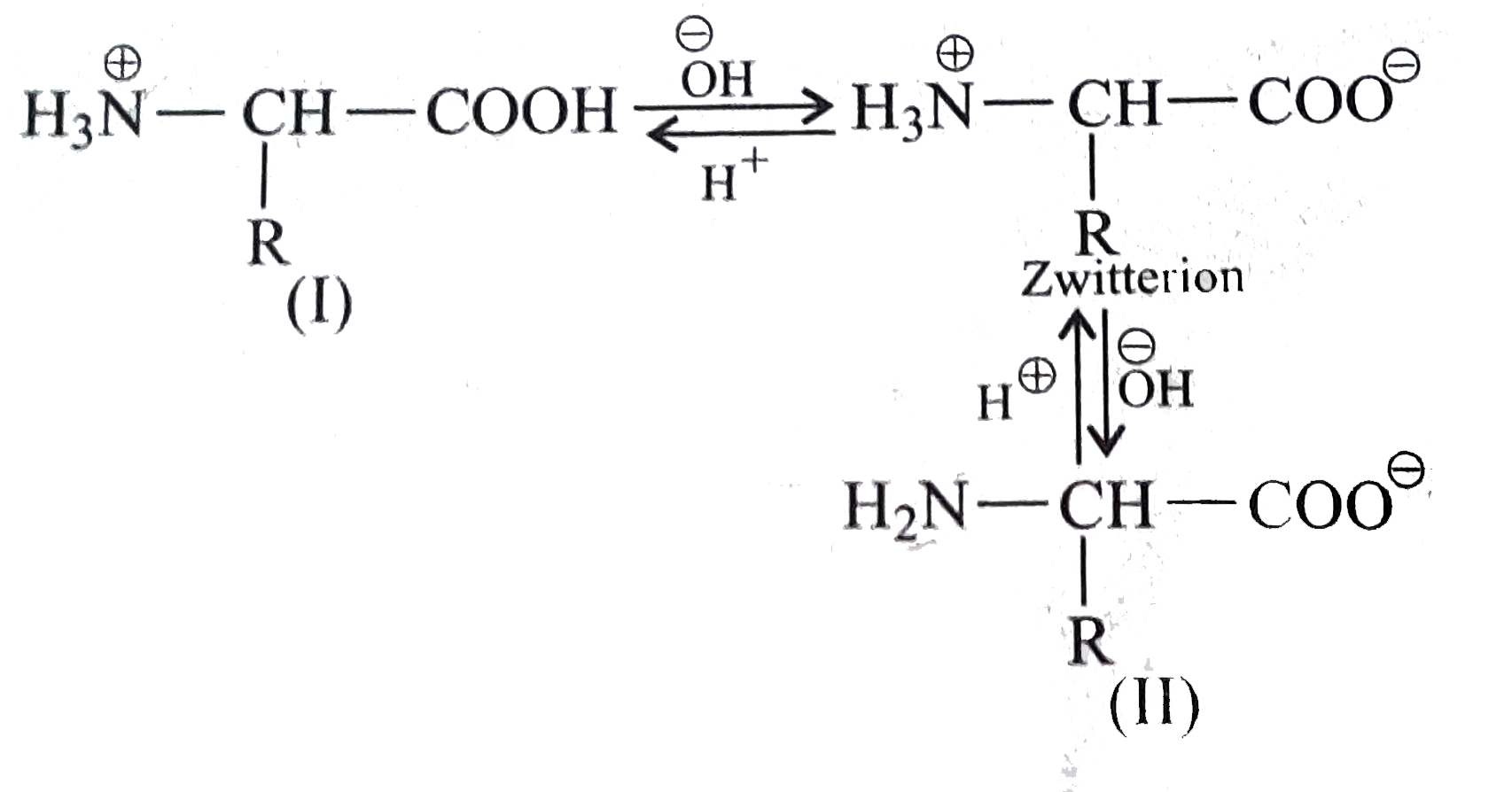How do you explain the amphoteric behaviour of amino acids?
Video Solution
Text Solution
Amino acids contain an acidic (carboxyl group) and a basic (amino group) group in the same molecule. In aqueous solution, they neutralise each other. The carboxyl group loses a proton while the amino group accepts it. As a result, a dipolar or zwitterion is formed.
H2N−CH∣R−COOH→H3⊕N−CH∣RZwitterion−COOΘ
In zwitterionic form, α−amino acids show amphoteric behaviour as they react with both acids and bases. In the acidic medium, the COΘO ion of the zwitterion accdepts a proton to form the cation (I) while in the basic medium, the ⊕NH3 ion loses a proton to form the anion (II).

Thus, the NH3 group acts as the acid while the COΘO group acts as the base.
|
Topper's Solved these Questions
- BIOMOLECULESBOOK - CENGAGE CHEMISTRYCHAPTER - BIOMOLECULESEXERCISE - Exercises (Linked Comprehension)
38 Videos
- BIOMOLECULESBOOK - CENGAGE CHEMISTRYCHAPTER - BIOMOLECULESEXERCISE - Exercises (Multiple Correcttype)
31 Videos
- BIOMOLECULESBOOK - CENGAGE CHEMISTRYCHAPTER - BIOMOLECULESEXERCISE - Solved Examples
45 Videos
- AROMATIC COMPOUNDS AND ALKYL AND ARYL HALIDES BOOK - CENGAGE CHEMISTRYCHAPTER - AROMATIC COMPOUNDS AND ALKYL AND ARYL HALIDES EXERCISE - Archives Subjective
18 Videos
- BIOMOLECULES, POLYMERS AND CHEMISTRY IN EVERYDAY LIFEBOOK - CENGAGE CHEMISTRYCHAPTER - BIOMOLECULES, POLYMERS AND CHEMISTRY IN EVERYDAY LIFEEXERCISE - QUESTION BANK
8 Videos
Similar Questions
Knowledge Check
Amphoteric behaviour is shown by
AH2CO3 and AI2O3BHCO−3 and H2OCHCO−3 and H3O+DH2CO3 and H2OThe pOH range for the isoelectric point of the amphoteric ion of an amino acid is
A5.5 to 6.3B2.5 to 5.0C7.7 to 8.5D9.0 to 10.7
How do you explain the functionality of a monomer?
View SolutionHow do you explain the functionality of a monomer ?
View SolutionHow do you explain the functionality of a monomer ?
View SolutionHow do you explain the functionality of a monomer?
View SolutionWhich of the following correctly explains the absorption of amino acids?
View SolutionAmino acids show amphoteric behaviour. Why?
View Solution
